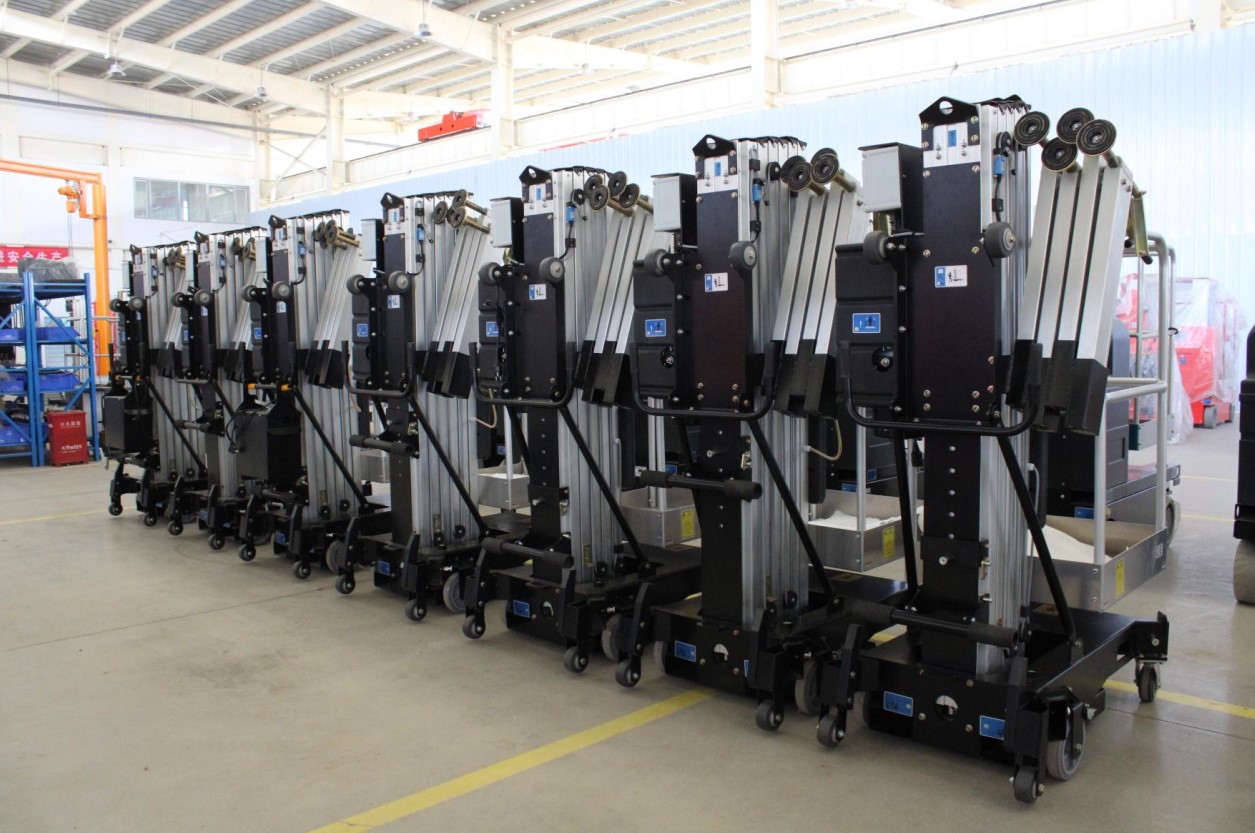 In the modern construction and maintenance industry, traditional ladders and scaffolding are gradually being replaced by smarter and safer solutions. Push-type vertical lifts have become ideal tools for confined spaces, sensitive flooring, and restricted environments due to their portability and efficiency. These lifts not only simplify aerial work but also represent a qualitative leap in safety, mobility, and productivity, making them the preferred choice for professionals across various industries.
In the modern construction and maintenance industry, traditional ladders and scaffolding are gradually being replaced by smarter and safer solutions. Push-type vertical lifts have become ideal tools for confined spaces, sensitive flooring, and restricted environments due to their portability and efficiency. These lifts not only simplify aerial work but also represent a qualitative leap in safety, mobility, and productivity, making them the preferred choice for professionals across various industries.
High-end single mast vertical lifts have an extensive range of applications, covering nearly all scenarios requiring aerial access. In electrical installation and maintenance, electricians can easily reach overhead power distribution systems using these lifts. HVAC engineers rely on them to maneuver efficiently through tight ductwork and piping areas for insulation or maintenance tasks. Interior fit-out teams also benefit from their convenience—whether for ceiling work, signage installation, or wiring layout, all can be accomplished with improved efficiency and ease.
Compared to traditional aerial work methods, the advantages of vertical lifts are clear. Their compact body design—typically no wider than 75 cm—allows them to navigate narrow aisles, warehouses, and office spaces with ease. They can even pass through standard elevator doors, significantly enhancing on-site mobility. Designed with lightweight frames and non-marking tires, they are ideal for sensitive surfaces such as carpets, wood, or tile flooring, ensuring no damage during operation. Additionally, aluminum alloy mast lifts streamline workflows—there is no need for time-consuming scaffolding assembly, and most units are ready to use immediately upon startup. Some models even support operation while elevated, allowing users to shift work locations without repetitive lowering and repositioning, thus dramatically shortening the task cycle.
Safety is another core strength of the single-mast lift. While traditional ladders and scaffolding are prone to tipping and falling accidents due to their lack of stability, vertical lifts feature guardrails and a robust base structure that minimize these risks. Their ergonomic design reduces operator fatigue from frequent climbing, helping to prevent musculoskeletal strain and ensuring long-term operational comfort. The spacious platform also provides room to place tools and materials within easy reach, further reducing unnecessary movement and downtime, and making the workflow smoother and more efficient.
In the long run, investing in DAXLIFTER lifts means more than just enhanced safety and productivity—it reflects a modern approach to work. With their compact footprint, adaptive versatility, and reliable safety features, these lifts are redefining standards for aerial operations. For industries striving for efficiency, safety, and comfort, this equipment is not just an upgrade—it's a driving force behind the evolution of working methods.
Post time: Jul-19-2025

